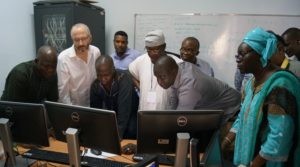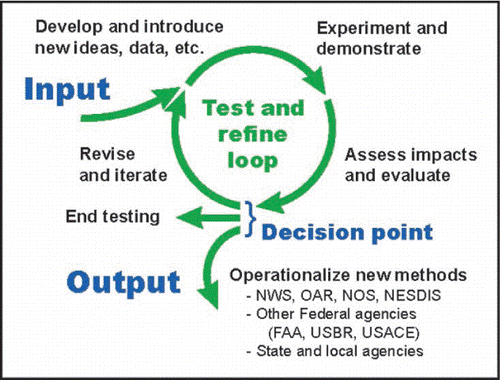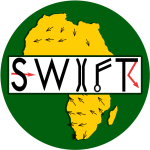During 2018 and 2019 African SWIFT are conducting a series of forecasting testbeds. Testbeds are recognised as a key tool to improve weather predictions worldwide, in particular to pull-through research to operations; to critically evaluate NWP and other tools; and to stimulate new research directions (Ralph et al. 2013). The aims of the SWIFT testbeds are, to increase cooperation between forecasting and research teams; to understand better the performance of regional models to improve their interpretation by forecasters; to guide the model development process; and to improve the delivery of model and observational data to forecasters, and communication with forecast users.
In January 2019 SWIFT ran a two-week testbed during the HyVic pilot flight campaign over Lake Victoria. This testbed consisted of intensive, real-time forecasting activities at which weather forecasters from different institutions came together with researchers to perform operational forecasting. The testbed brought together representatives of stakeholder groups, in order to explore and enhance the delivery of impact based forecasts. (Follow this link for more information on this event). The January testbed was preceded by a forecaster training event, held in Togo in November 2018, conducted in collaboration with WMO SWFDP (Severe Weather Forecast Demonstration). (For more information on this event follow this link.) During the January 2019 testbed, a subset of the Togo participants from the researcher and forecaster communities came together to document conclusions from the Togo training event.
A second SWIFT testbed is due to take place in Nairobi, April-May 2019, in collaboration with the WMO HighWay field campaign and hosted by SWIFT partners the Kenya Meteorological Department (KMD). This testbed will focus on the Nowcasting to Synoptic timescales. Dedicated model and observational products will be made available. Access to the HighWay field campaign observations in real time will significantly enhance the value and potential outcomes of the testbed. The event will include regular teleconferences with other participating forecasting centres.

Fig. 1. Conceptual schematic of the test bed process for a hypothetical project, tool, or concept—including innovation, demonstration, evaluation, and, where suitable, a transition to operations within a federal, state, or local organization. NOS = National Ocean Service; USBR = United States Bureau of Reclamation; and USACE = U.S. Army Corps of Engineers. (Source: Ralph et al. 2013)
Reference: Ralph, F.M., J. Intrieri, D. Andra, R. Atlas, S. Boukabara, D. Bright, P. Davidson, B. Entwistle, J. Gaynor, S. Goodman, J. Jiing, A. Harless, J. Huang, G. Jedlovec, J. Kain, S. Koch, B. Kuo, J. Levit, S. Murillo, L.P. Riishojgaard, T. Schneider, R. Schneider, T. Smith, and S. Weiss, 2013: The Emergence of Weather-Related Test Beds Linking Research and Forecasting Operations. Bull. Amer. Meteor. Soc., 94, 1187–1211, https://doi.org/10.1175/BAMS-D-12-00080.1
